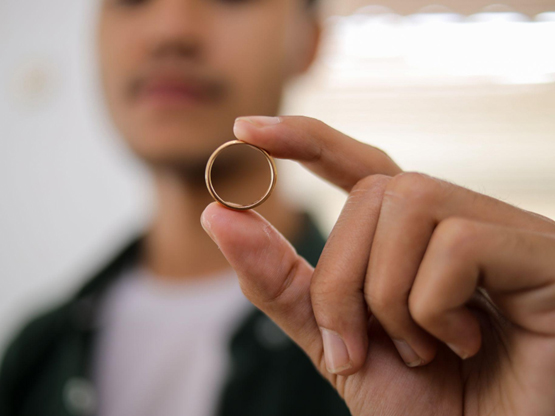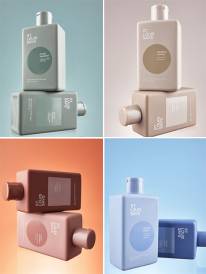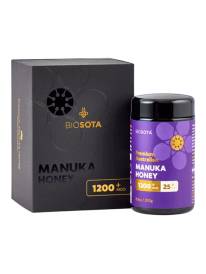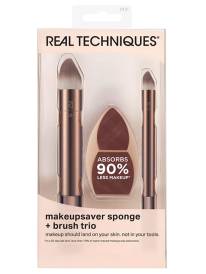How to Pick a Ring That Fits Both Style and Daily Wear

Key Takeaways:
● Style and comfort need to work together for a ring to be wearable long-term
● Daily activities and hand use should guide material and design choices
● Fit goes beyond size"shape and profile affect how a ring feels all day
● A well-chosen ring should continue to feel and look right as it ages
Rings are often chosen for their aesthetic appeal. You see a sleek finish or a textured design that catches your eye, and that's usually enough to seal the deal. But fast forward to a week or two later, and the shine wears off"sometimes literally. It pinches your finger, snags on clothes, or worse, ends up on your dresser more than your hand.
That's the issue with choosing a ring purely for its aesthetic appeal. If it's going to be part of your daily life, it needs to move with you"not against you. A good-looking ring that feels awkward during basic tasks quickly becomes a regret, not an accessory. Whether you're picking something for yourself or as a gift, factoring in how a ring handles daily wear is just as important as how well it fits your personal style.
What Your Hands Go Through Daily
You probably don't think about it much, but your hands are constantly busy. From grabbing keys and typing on a laptop to working out or fixing things around the house, there's a surprising amount of strain that builds up day to day. Even activities that seem gentle"such as cooking or cleaning"can impact how long a ring holds up.
Some rings simply aren't built for this kind of wear. Delicate engravings can catch dirt easily, soft metals scratch against rough surfaces, and bold designs may dig in when you grip a dumbbell or carry heavy bags. If your job involves tools, machinery, or even just a lot of hand movement, it becomes even more important to pick a ring that won't slow you down.
That's not to say you need something industrial-looking. But when a ring is going to be with you from your morning routine through late-night errands, it has to be more than just a statement piece. The right ring should feel natural"like it's meant to be there, even during the less glamorous parts of the day.
Understanding the Role of Materials
Material choices affect far more than appearance. Sure, a polished surface might stand out at first glance, but it's what happens after weeks of use that tells you whether a ring was the right pick. Metals like titanium and tungsten are often favoured for their scratch resistance and strength. Stainless steel also handles water, sweat, and general wear quite well, making it a practical choice for everyday rings.
At the other end of the spectrum, softer metals like gold or silver can lose their edge quickly. While they offer a more traditional look, they can dent or tarnish faster, especially when exposed to moisture or friction. That doesn't mean they're off the table"it just means you need to consider how much maintenance you're willing to deal with.
There's also how each metal feels. Some are heavier on the finger, while others are so light you'll forget you're wearing them. If you're considering mens rings that you plan to wear from work to weekends, it makes sense to test a few materials firsthand and see what fits your lifestyle best.
Comfort Fit and Profile Shape
You'll notice it the moment you try it on"some rings feel right immediately, while others seem like they're always in the way. That often comes down to the shape and internal fit. Comfort-fit rings, for example, are slightly rounded on the inside, allowing them to glide over your knuckle more easily and sit comfortably throughout the day. It's a minor design tweak, but one that makes a significant difference if you plan to wear the ring for extended periods.
The outer shape matters just as much. Flat-profile rings tend to look more modern and minimal, but they can feel bulkier when you make a fist or grip something tightly. Domed profiles, on the other hand, have a smoother curve that moves more naturally with your hand. Even the width plays a role"wider bands have a strong presence but may press uncomfortably against nearby fingers, especially if your hands swell throughout the day.
What works for someone else won't necessarily feel right for you. The most reliable way to know? Try on different fits and keep them on for more than a minute. Open a door, text someone, slide your hand into a pocket. If it already feels awkward, it will only get worse over time.
Finding the Right Match for Your Wardrobe
The ring you wear every day doesn't need to match every outfit"but it should feel like it belongs with your overall look. Some rings are subtle enough to blend into any wardrobe, while others stand out as statement pieces. If your style leans toward structured and formal, polished metals or classic bands might be more your speed. For a laid-back or streetwear-inspired style, matte finishes or black-toned rings often pair better.
The details you wear every day"watch faces, belt buckles, even shoe hardware"can subtly influence how well a ring fits. If you tend to wear silver accents, a warm-toned metal might feel out of place. Likewise, if your outfits are bold and textured, a minimalist ring might get lost in the mix.
It's less about matching perfectly and more about coordination. A well-chosen ring can anchor your style without shouting for attention. That's especially important when a ring becomes a daily staple, not just something you pull out for special occasions. It should reflect your taste, but also make sense with the pieces you wear most.
Why Size Isn't Just About Fit
Getting the size right isn't as straightforward as it sounds. Sure, a ring might slide on easily when you try it at the store, but that doesn't mean it will feel the same by the end of the day. Hands change with temperature, activity, and even hydration. What fits snugly in the morning might feel tight by mid-afternoon, especially in warmer weather or after physical activity.
A proper fit should feel secure but not restrictive. It shouldn't leave marks when you take it off, and you should be able to rotate it slightly without resistance. If you're between sizes, it's often better to choose the slightly larger option"especially for rings intended for daily wear.
Professional sizing helps, but so does living with a ring for a few hours before deciding it's right. That means doing everyday things, such as working, relaxing, and running errands. You want a fit that holds up through all of it, not just the five minutes it spends on your finger during a quick try-on.
The Value of a Ring That Ages Well
A ring's appeal doesn't end with its first impression. Over time, it tells its own story"through marks, subtle changes in finish, or the way it settles more naturally on your hand. That kind of wear isn't always a flaw. In fact, certain materials develop a patina that adds character, not damage.
Some people prefer rings that resist change entirely, staying as polished as the day they were made. Others appreciate how textures shift and edges soften, making the piece feel more personal over time. Whichever side you fall on, the key is knowing how your choice of material and finish will evolve with age and wear.
It's also worth considering maintenance. Some rings need regular cleaning to keep their shine, while others are almost self-sustaining. If you'd rather not worry about polishing or special storage, that should be a factor in your choice. A good everyday ring should meet your expectations not just at first, but years down the line.
MORE



